Jan Dlabal
TIPS: Text-Image Pretraining with Spatial Awareness
Oct 21, 2024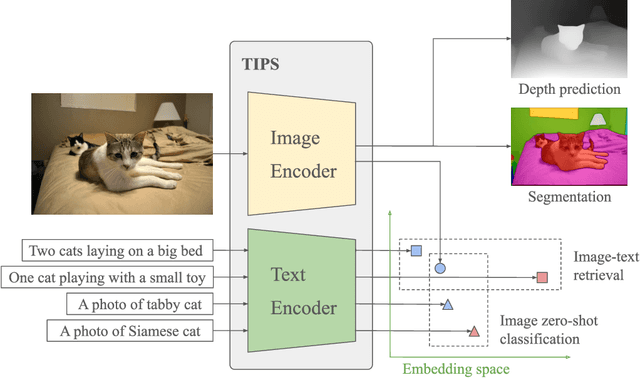
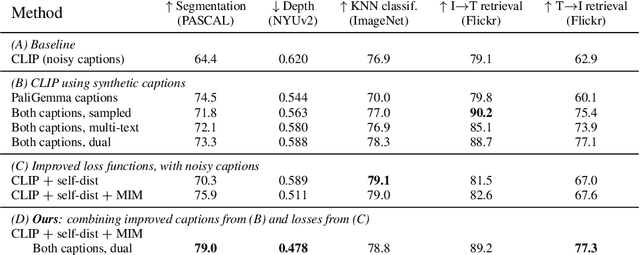
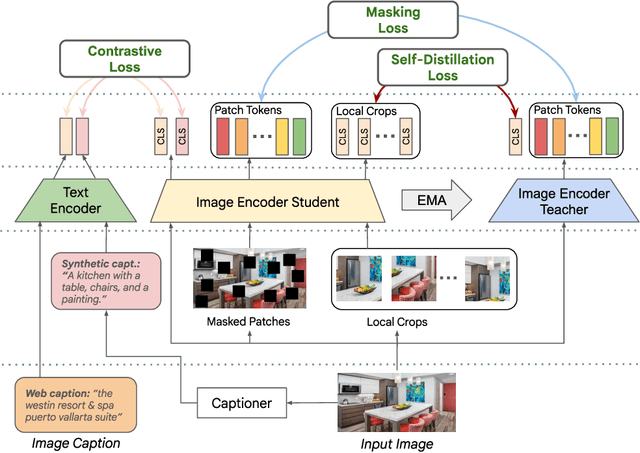

Abstract:While image-text representation learning has become very popular in recent years, existing models tend to lack spatial awareness and have limited direct applicability for dense understanding tasks. For this reason, self-supervised image-only pretraining is still the go-to method for many dense vision applications (e.g. depth estimation, semantic segmentation), despite the lack of explicit supervisory signals. In this paper, we close this gap between image-text and self-supervised learning, by proposing a novel general-purpose image-text model, which can be effectively used off-the-shelf for dense and global vision tasks. Our method, which we refer to as Text-Image Pretraining with Spatial awareness (TIPS), leverages two simple and effective insights. First, on textual supervision: we reveal that replacing noisy web image captions by synthetically generated textual descriptions boosts dense understanding performance significantly, due to a much richer signal for learning spatially aware representations. We propose an adapted training method that combines noisy and synthetic captions, resulting in improvements across both dense and global understanding tasks. Second, on the learning technique: we propose to combine contrastive image-text learning with self-supervised masked image modeling, to encourage spatial coherence, unlocking substantial enhancements for downstream applications. Building on these two ideas, we scale our model using the transformer architecture, trained on a curated set of public images. Our experiments are conducted on 8 tasks involving 16 datasets in total, demonstrating strong off-the-shelf performance on both dense and global understanding, for several image-only and image-text tasks.
Modeling Collaborator: Enabling Subjective Vision Classification With Minimal Human Effort via LLM Tool-Use
Mar 05, 2024Abstract:From content moderation to wildlife conservation, the number of applications that require models to recognize nuanced or subjective visual concepts is growing. Traditionally, developing classifiers for such concepts requires substantial manual effort measured in hours, days, or even months to identify and annotate data needed for training. Even with recently proposed Agile Modeling techniques, which enable rapid bootstrapping of image classifiers, users are still required to spend 30 minutes or more of monotonous, repetitive data labeling just to train a single classifier. Drawing on Fiske's Cognitive Miser theory, we propose a new framework that alleviates manual effort by replacing human labeling with natural language interactions, reducing the total effort required to define a concept by an order of magnitude: from labeling 2,000 images to only 100 plus some natural language interactions. Our framework leverages recent advances in foundation models, both large language models and vision-language models, to carve out the concept space through conversation and by automatically labeling training data points. Most importantly, our framework eliminates the need for crowd-sourced annotations. Moreover, our framework ultimately produces lightweight classification models that are deployable in cost-sensitive scenarios. Across 15 subjective concepts and across 2 public image classification datasets, our trained models outperform traditional Agile Modeling as well as state-of-the-art zero-shot classification models like ALIGN, CLIP, CuPL, and large visual question-answering models like PaLI-X.
CARLS: Cross-platform Asynchronous Representation Learning System
May 26, 2021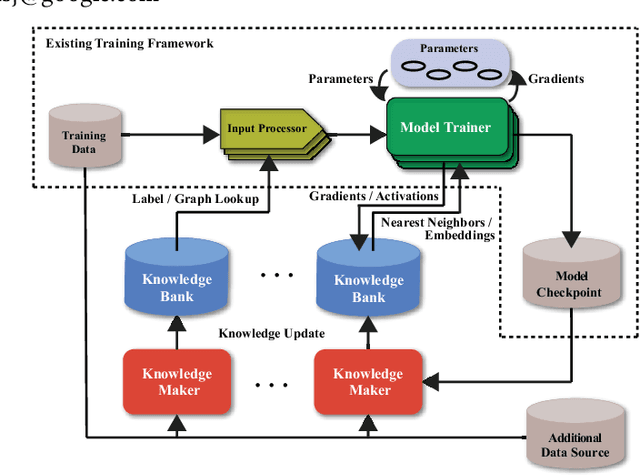

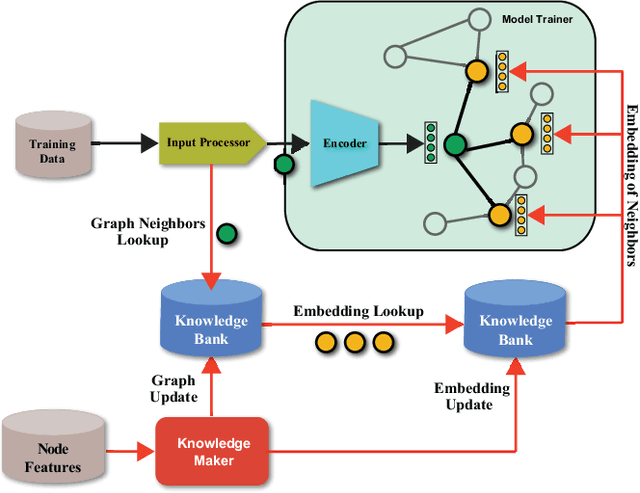
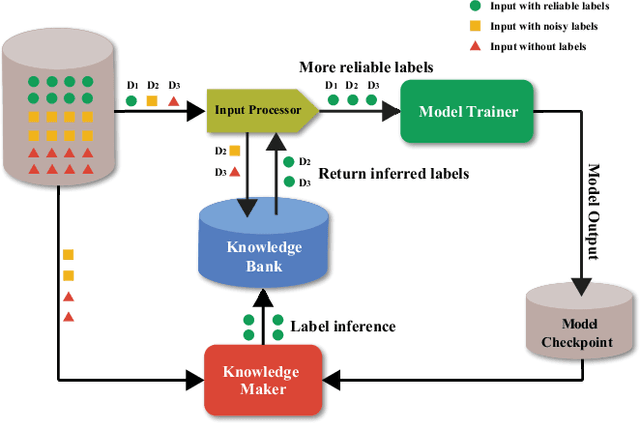
Abstract:In this work, we propose CARLS, a novel framework for augmenting the capacity of existing deep learning frameworks by enabling multiple components -- model trainers, knowledge makers and knowledge banks -- to concertedly work together in an asynchronous fashion across hardware platforms. The proposed CARLS is particularly suitable for learning paradigms where model training benefits from additional knowledge inferred or discovered during training, such as node embeddings for graph neural networks or reliable pseudo labels from model predictions. We also describe three learning paradigms -- semi-supervised learning, curriculum learning and multimodal learning -- as examples that can be scaled up efficiently by CARLS. One version of CARLS has been open-sourced and available for download at: https://github.com/tensorflow/neural-structured-learning/tree/master/research/carls
Taskology: Utilizing Task Relations at Scale
May 14, 2020
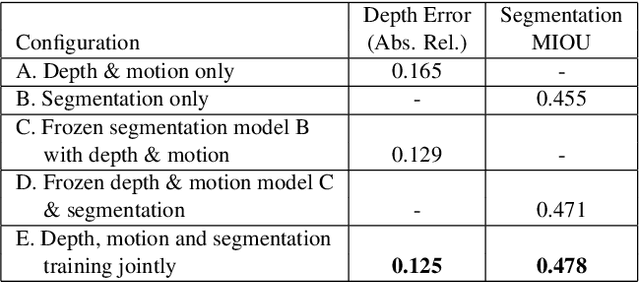
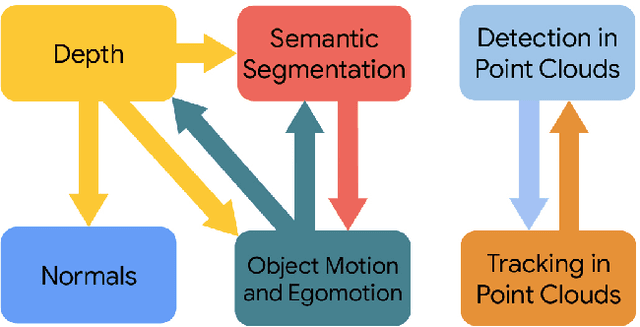

Abstract:It has been recognized that the joint training of computer vision tasks with shared network components enables higher performance for each individual task. Training tasks together allows learning the inherent relationships among them; however, this requires large sets of labeled data. Instead, we argue that utilizing the known relationships between tasks explicitly allows improving their performance with less labeled data. To this end, we aim to establish and explore a novel approach for the collective training of computer vision tasks. In particular, we focus on utilizing the inherent relations of tasks by employing consistency constraints derived from physics, geometry, and logic. We show that collections of models can be trained without shared components, interacting only through the consistency constraints as supervision (peer-supervision). The consistency constraints enforce the structural priors between tasks, which enables their mutually consistent training, and -- in turn -- leads to overall higher performance. Treating individual tasks as modules, agnostic to their implementation, reduces the engineering overhead to collectively train many tasks to a minimum. Furthermore, the collective training can be distributed among multiple compute nodes, which further facilitates training at scale. We demonstrate our framework on subsets of the following collection of tasks: depth and normal prediction, semantic segmentation, 3D motion estimation, and object tracking and detection in point clouds.
 Add to Chrome
Add to Chrome Add to Firefox
Add to Firefox Add to Edge
Add to Edge